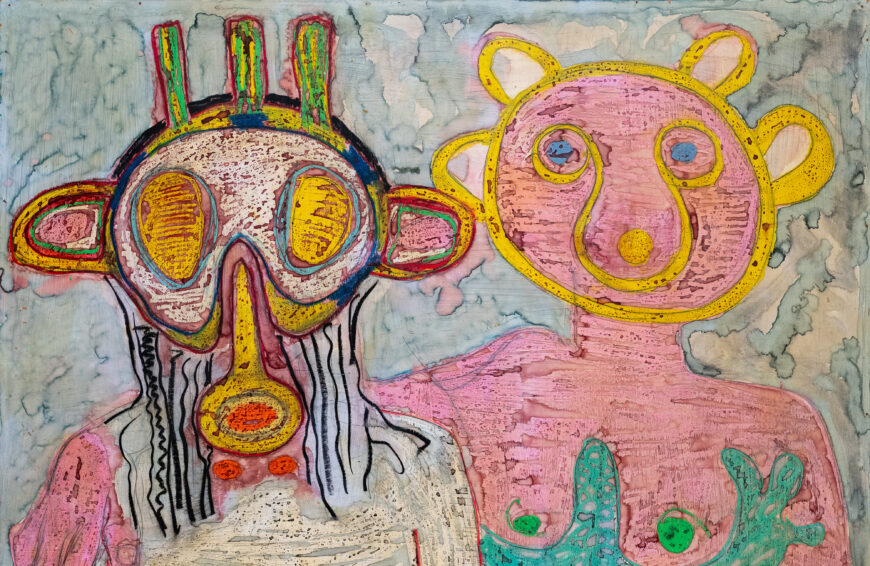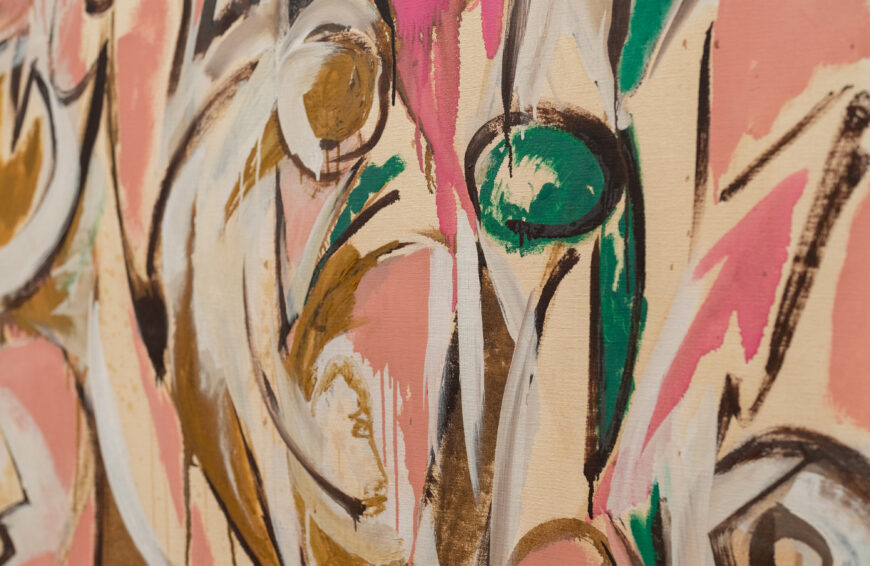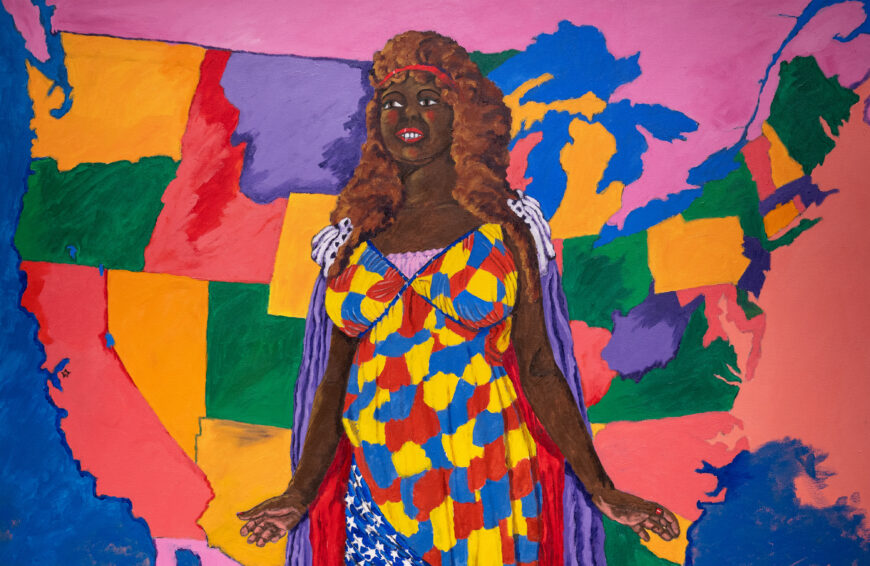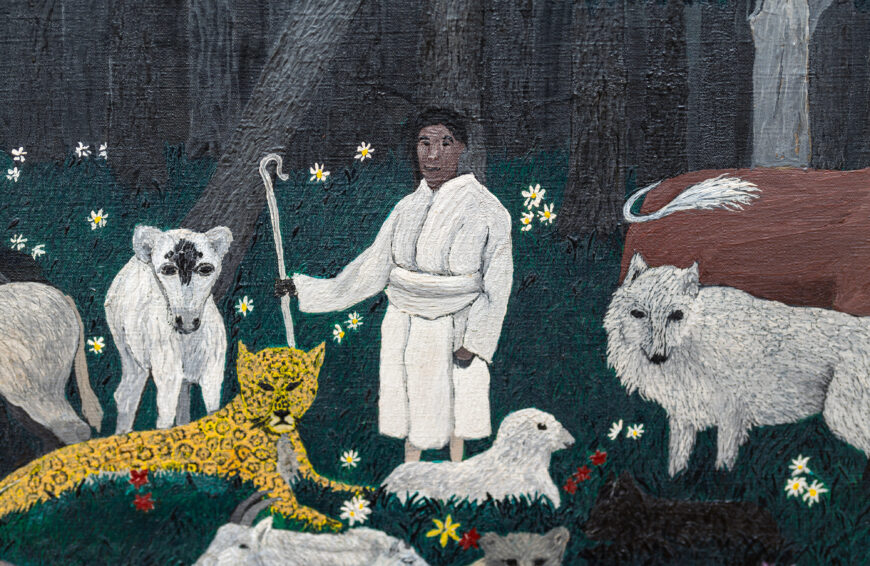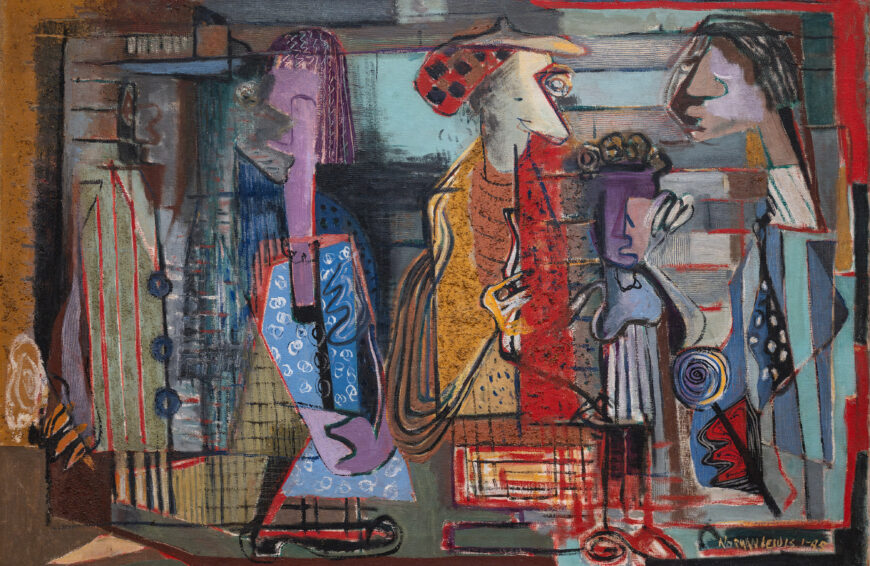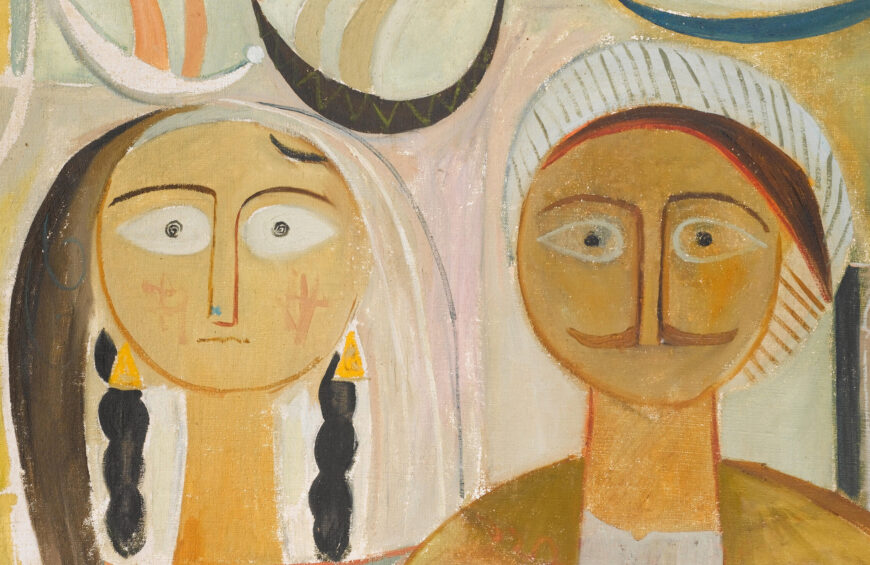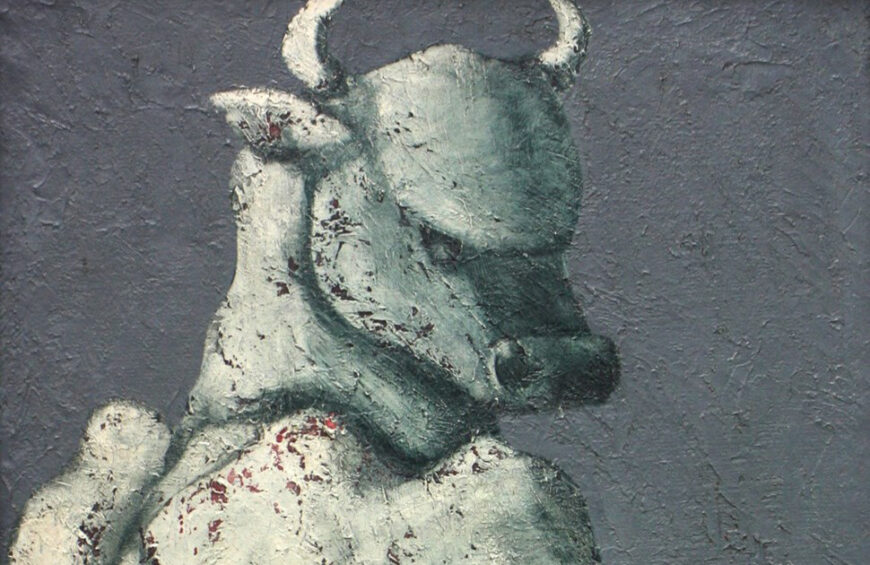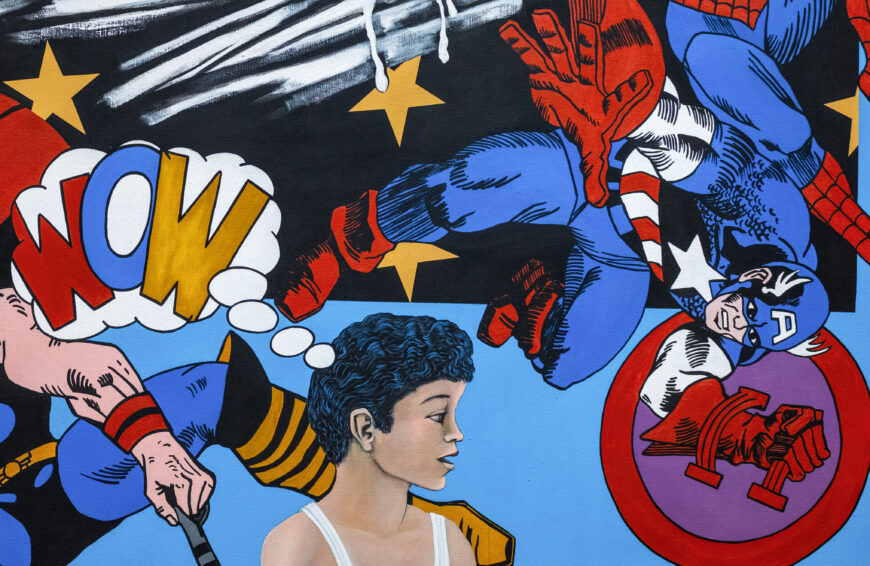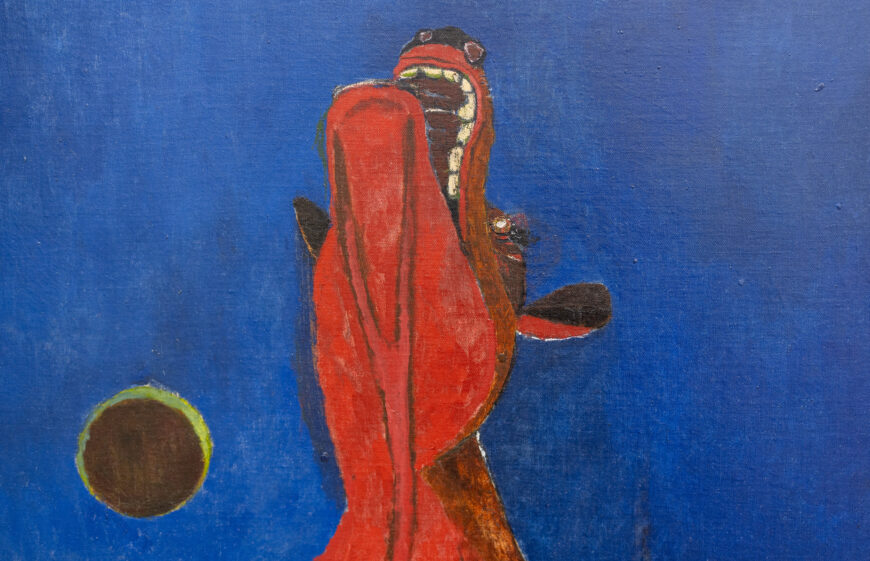Cartoonish coyotes play on Fonseca’s overlapping identities as queer, American, and Indigenous.
Harry Fonseca, Two Coyotes with Flags, acrylic on canvas, n.d. (Gilcrease Museum) © Estate of Harry Fonseca
[0:00] [music]
Dr. Steven Zucker: [0:04] We’re in the Gilcrease Museum in Tulsa, Oklahoma, looking at a large, playful canvas by Harry Fonseca called “Two Coyotes and Flags.”
Roxanne Beason: [0:14] In this painting we see two coyotes as human figures, one sitting, one standing. They’re cartoonish in nature, and whimsical. They are wearing Plains-style headdresses, holding tomahawks, and draped over the shoulder with American flags. They’re both wearing Converse sneaker-style shoes, and they’re against this flat, bright pink backdrop.
[0:38] What’s significant to note here about the headdress is it’s a war bonnet. It’s given in ceremonial practice, it’s sacred, and yet it’s often used as a symbol to homogenize Indigenous cultures as one.
[0:53] Fonseca is Maidu, and Maidu would not traditionally wear a war bonnet, so he’s just playing on this stereotype of this homogenized Indigenous image.
Dr. Zucker: [1:03] That bright, bubblegum-pink background feels so artificial. This is an image we can recognize as being part of this larger movement that we call Pop Art.
Roxanne: [1:15] He’s also purposely using this to express his queer identity. That is seen in the Converse sneakers, which calls back to the “Castro Clone,” which is a super hypermasculine style worn by men both hiding and expressing their queer identity.
[1:34] Fonseca is from Sacramento, so he would have been privy to this particular style. It’s shown in a lot of his work, where his coyote is usually wearing leather jackets, the white tank top, jeans.
Dr. Zucker: [1:46] He’s replaced the leather jacket with the American flag.
Roxanne: [1:50] He’s draping these figures in the flag in a way that wouldn’t be appropriate according to the US Legion Flag Code. Flags are not to be worn, they’re not to be touching the ground. It’s draped over him like it’s part of the Indigenous dress, like it’s a blanket.
[2:05] These stereotypes of the Plains headdress and the tomahawk, he’s saying that America is wrapped up in an idea of what Indigenous identity is.
Dr. Zucker: [2:15] The flag here is being used as a subversive tool.
Roxanne: [2:19] The average American has no idea what the life and experience of the Indigenous person is. I think he does well to remind Americans of that, but he’s still placing himself here.
[2:31] He is struggling with his own identity as an Indigenous person, as somebody who has served for the US Navy, as somebody who has to be both an American and an Indigenous person.
Dr. Zucker: [2:43] That idea of overlapping identities is referenced in a subtle way in the identity of the coyote as a trickster figure in Native traditions.
Roxanne: [2:52] In oral traditions, the coyote is both a helper and a trickster in that he’s ready to fool everyone, but he ends up fooling himself.
Dr. Zucker: [3:02] Fonseca does present himself as coyote in a large series of paintings.
Roxanne: [3:08] Coyote takes on a lot of different roles in his paintings. Coyote could be anywhere from an opera singer to a piano player. You know he’s up to something.
Dr. Zucker: [3:18] Fonseca’s coyote is a performer. He is here staging his complex identity.
Roxanne: [3:24] The headdresses are frenetic compared to the solid background.
Dr. Zucker: [3:29] That activated brushwork is set against these broad pools of color — the pinks, the blues, the lavenders, the reds and whites, often overlapping on outlines, creating this liquid quality to those surfaces.
[3:42] Then there are these drips, which have to remind anybody who’s looking at this painting of earlier mid-century Abstract Expressionism and exactly what this painting is not doing in its Pop orientation.
Roxanne: [3:54] I think the drips are also trying to make it seem like an antique photograph, referencing Edward Curtis and the way he posed Indigenous people for his photographs in this stereotypical way.
Dr. Zucker: [4:06] Curtis asked his sitters to don traditional regalia, even if it wasn’t the clothing that they would normally wear. Those photographs became powerful references throughout the 19th and 20th centuries, even though they were misleading.
Roxanne: [4:21] Fonseca, here, is using the stereotype of Indigenous identity as a commentary on Curtis and making people think about the complex identities that go beyond just indigeneity.
[4:32] There’s American identity, there’s queer identity, and then there’s personal identity. He identifies with the coyote because he can take this stereotype and fool the average viewer who isn’t going to assume these identities.
[4:48] [music]


